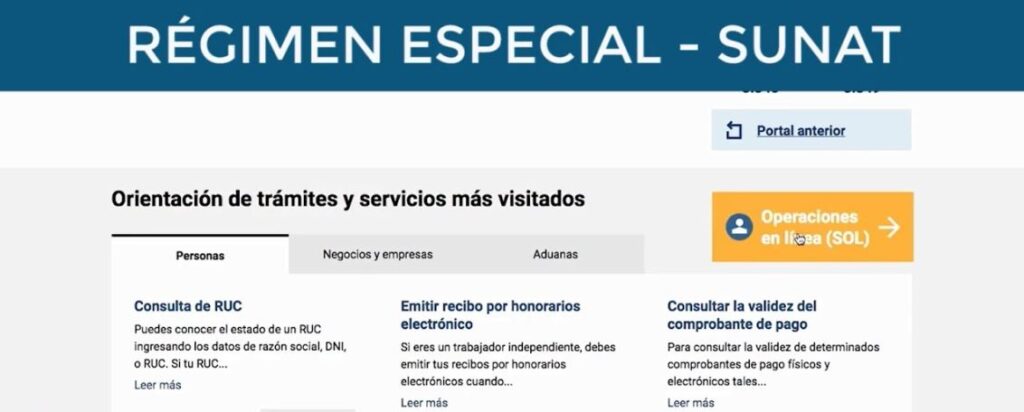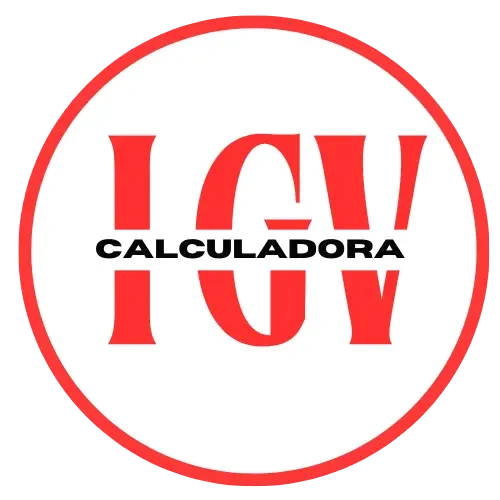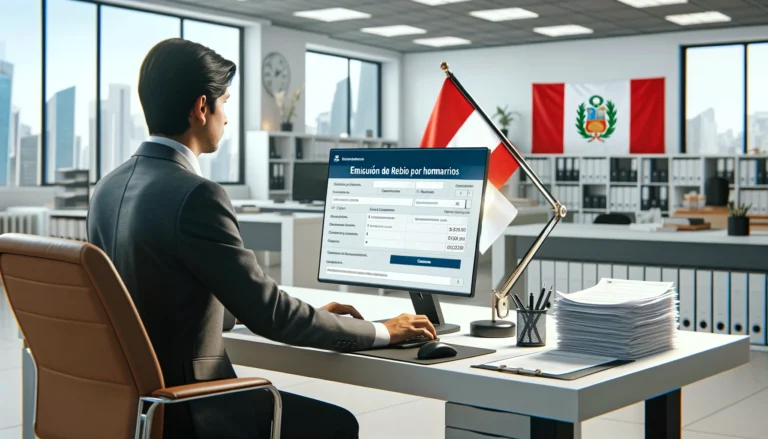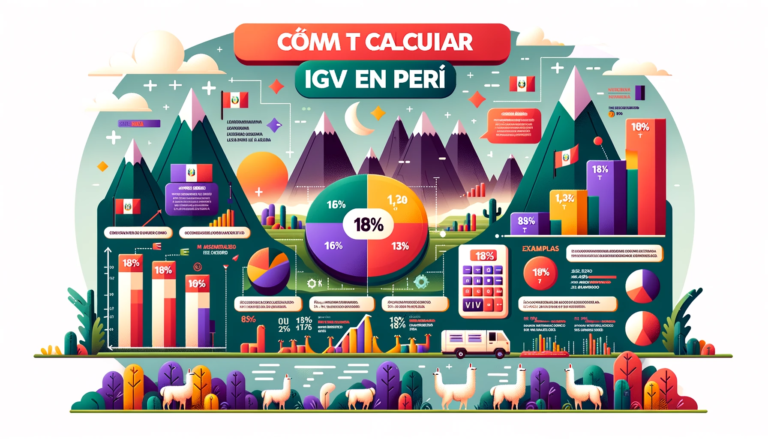Unlock Savings: Master Peru’s Régimen Especial de Renta!

In Peru, taxation is a vital aspect of economic management, impacting individuals and businesses alike. The “Régimen Especial de Renta” (RER) is a specialized tax category designed to simplify the tax obligations for small and medium-sized enterprises (SMEs). By offering a more straightforward tax calculation method and lower rates, the RER aims to encourage business formalization and growth. Understanding the nuances of this regime is crucial for SMEs to ensure compliance and maximize their financial benefits, enabling them to focus more effectively on scaling and optimizing their operations within the Peruvian market.
Overview of Régimen Especial de Renta
The “Régimen Especial de Renta” (RER) is a tax regime specifically tailored for small and medium-sized enterprises (SMEs) in Peru, established to support the economic activities of smaller businesses by offering a simplified and reduced tax structure. This regime was introduced as part of broader tax reforms aimed at enhancing economic inclusivity and reducing the burden of complex tax compliance on smaller entities. The purpose behind the RER is to promote entrepreneurship and job creation by making it easier and more financially viable for SMEs to operate within the legal framework.

To be eligible for the RER, businesses must meet certain criteria, which typically include limits on annual revenue and the scale of operations. For instance, as per the latest regulations, companies with annual gross sales not exceeding a specified threshold can qualify for this regime. Additionally, the RER is designed for businesses engaged in certain types of activities; exclusions may apply based on the nature of the business or the industry. Understanding these eligibility requirements is crucial for businesses to ensure they can benefit from the reduced tax rates and simplified procedures offered under the RER, thereby aligning their operations more closely with national economic development goals.
Key Features of the Régimen Especial de Renta
The “Régimen Especial de Renta” (RER) provides several key features designed to support small and medium-sized enterprises (SMEs) in Peru. This regime offers reduced tax rates, which are significantly lower than those in the general tax system, helping SMEs save money and reinvest in their operations. Businesses under RER must adhere to specific filing dates and deadlines, generally on a quarterly basis, to maintain compliance and continue enjoying the regime’s benefits. Required documentation includes detailed sales records and purchase invoices, essential for audit and verification processes.
Compared to other tax regimes like the “Régimen MYPE Tributario,” which also targets smaller businesses but with different eligibility criteria and benefits, RER provides a distinct set of advantages. Business owners must understand these differences to choose the most suitable tax regime that aligns with their business size and financial objectives, optimizing their tax obligations and benefits within Peru’s tax framework.
Benefits of Opting for Régimen Especial de Renta
Opting for the “Régimen Especial de Renta” (RER) offers several compelling benefits for small and medium-sized enterprises in Peru, primarily centered around financial incentives and operational simplicity. The regime provides significant tax benefits, including lower tax rates compared to the general tax system, which can substantially decrease the fiscal burden on eligible businesses. This financial advantage allows SMEs to allocate more resources towards development and expansion efforts.
Moreover, the RER simplifies the tax filing process. By reducing the frequency and complexity of tax submissions, the regime enables business owners to focus more on their core operations rather than on bureaucratic compliance. This simplification is particularly beneficial for entrepreneurs who may lack extensive accounting resources.

To illustrate, consider a hypothetical example of tax calculations under RER: An SME with annual gross receipts of S/ 300,000 would be subject to a lower tax rate under the RER compared to the standard business tax rate. If the RER tax rate is 10%, the business would owe S/ 30,000 in taxes, whereas under a higher standard rate of 28%, the tax liability would jump to S/ 84,000. This example highlights how the RER can lead to significant savings and underscores the regime’s attractiveness to SMEs aiming to optimize their financial commitments.
Challenges and Considerations
While the “Régimen Especial de Renta” (RER) offers significant benefits, businesses must navigate several challenges and legal considerations. Staying compliant with evolving tax regulations is crucial, as changes can impact eligibility and tax benefits, requiring ongoing vigilance and proactive tax planning. Businesses must also avoid common pitfalls like missing filing deadlines or misreporting income to prevent penalties or disqualification from the regime. Moreover, regulatory changes can necessitate adjustments in business strategies to ensure continued compliance and optimal use of the regime’s advantages. Effective management and possibly professional advisory services are essential to navigate these complexities efficiently.
How to Apply for Régimen Especial de Renta
Applying for the “Régimen Especial de Renta” (RER) involves a clear, step-by-step process designed to streamline the registration for eligible small and medium-sized enterprises. To begin, businesses need to gather and complete the necessary forms, which are typically available from the Peruvian tax authority’s website or local offices. These forms require detailed business information and financial data to establish eligibility.
The application process starts with filling out the registration form, often referred to as the RER declaration, which must be submitted along with required documents such as proof of income, business licenses, and identification details of the business owners. It’s crucial to ensure that all information provided is accurate and complete to avoid delays or rejections.

To ensure a smooth application process, businesses should consider a few practical tips:
- Double-check all entered information for accuracy before submission.
- Keep copies of all submitted documents for your records.
- Seek advice from a tax professional if uncertain about any requirements or eligibility criteria.
Once all forms are submitted, the tax authority will review the application to confirm eligibility. If approved, businesses will receive notification and can then begin enjoying the benefits of the RER, such as lower tax rates and simplified filing procedures. It’s advisable to regularly check the status of your application and be prepared to provide additional information if requested by the tax authorities.
Managing Finances Under Régimen Especial de Renta
Effectively managing finances under the “Régimen Especial de Renta” (RER) involves diligent bookkeeping and strategic financial planning. Businesses must maintain accurate records to ensure compliance and fully benefit from the RER’s lower tax rates. Using accounting software designed for SMEs can help streamline this process, reducing errors and saving time. These tools often feature functionalities that align with Peruvian tax regulations, enhancing efficiency.
To leverage the RER for business growth, companies should use the financial benefits derived from reduced tax obligations to reinvest in key business areas like marketing, product development, or expansion. This strategic use of resources can promote growth and sustainability, allowing businesses to focus more on expansion and less on complex tax compliance, thereby fostering long-term success.
Future of Régimen Especial de Renta
The future of the “Régimen Especial de Renta” (RER) is likely to involve legislative changes as authorities aim to update and refine the regime to better support small and medium-sized enterprises in Peru. Experts suggest possible adjustments might include modifications to tax rates, eligibility criteria, or compliance processes, which could significantly impact businesses.
To effectively respond to these changes, businesses should stay informed through reliable sources and maintain regular consultations with tax professionals. Additionally, companies should cultivate flexible financial and operational strategies, such as investing in adaptable accounting systems and emphasizing compliance. By preparing for potential legislative updates, businesses can ensure they continue to benefit from the RER while smoothly transitioning to meet new requirements.
Conclusion
In conclusion, the “Régimen Especial de Renta” (RER) provides a tailored tax framework designed to support the growth and sustainability of small and medium-sized enterprises in Peru. With its advantageous tax rates, simplified compliance processes, and eligibility benefits, RER stands as a vital tool for businesses aiming to thrive in a competitive market. However, understanding and navigating the RER’s requirements, benefits, and potential future changes are essential for maximizing these advantages.
Call To Action
For businesses looking to stay ahead in managing their tax obligations under the RER, continuous education and strategic planning are crucial. We encourage readers to subscribe to receive more detailed guides and updates on Peruvian tax regulations. Additionally, for personalized assistance in tax planning and compliance, consider our consultation services designed to help you optimize your tax strategy.
Lastly, for accurate and efficient tax calculations under the RER, visit our website at https://calculadoraigv.com/. Our tools are specifically designed to aid in the calculation of taxes under the RER, ensuring you can easily manage your fiscal responsibilities while focusing on growing your business.




